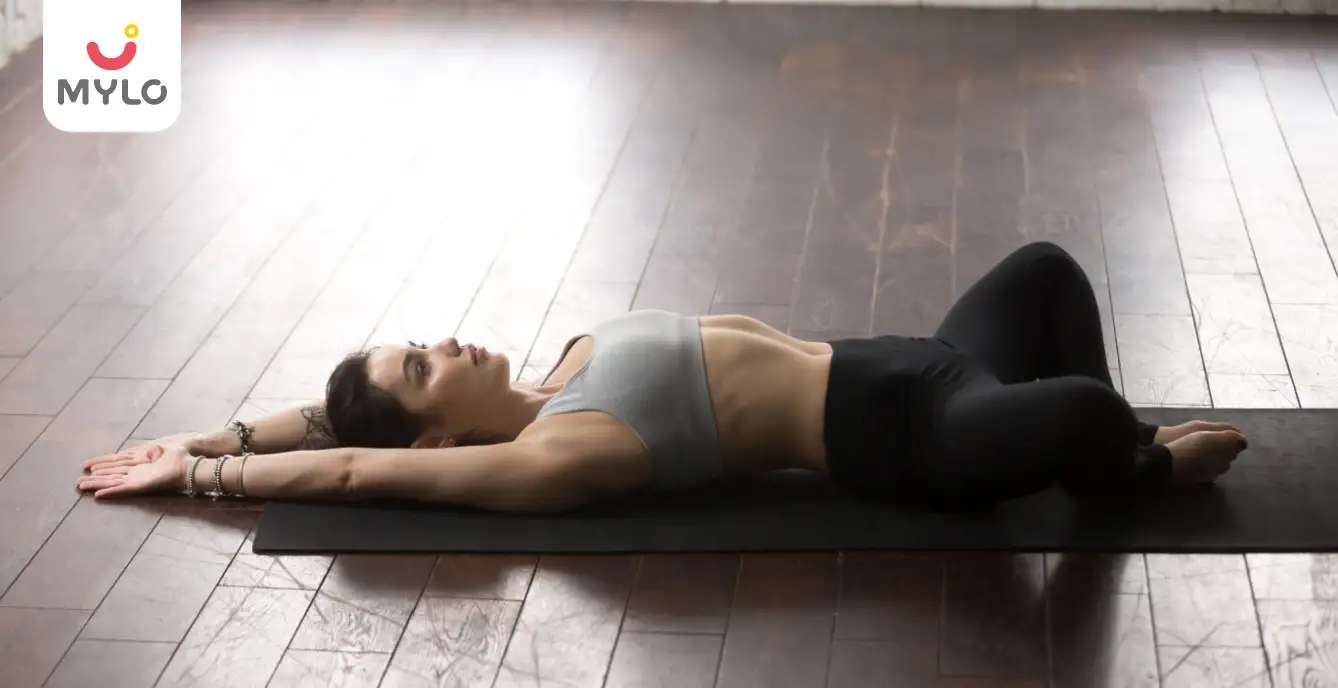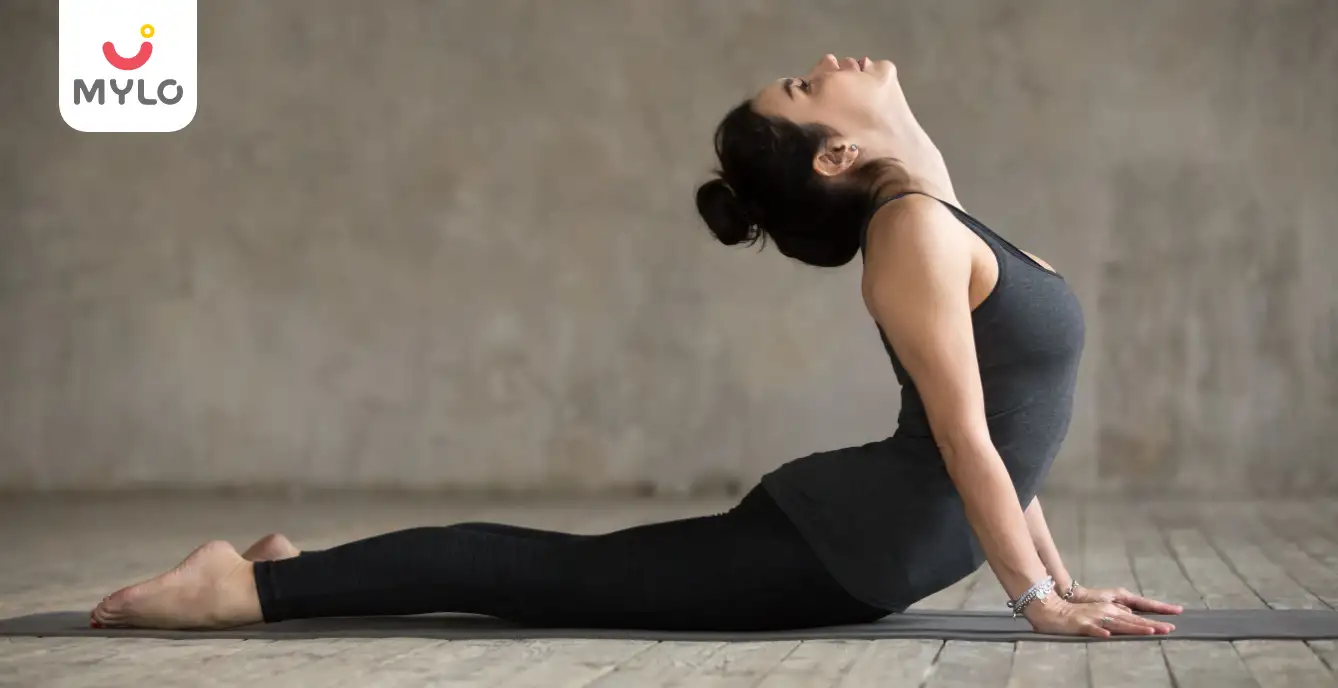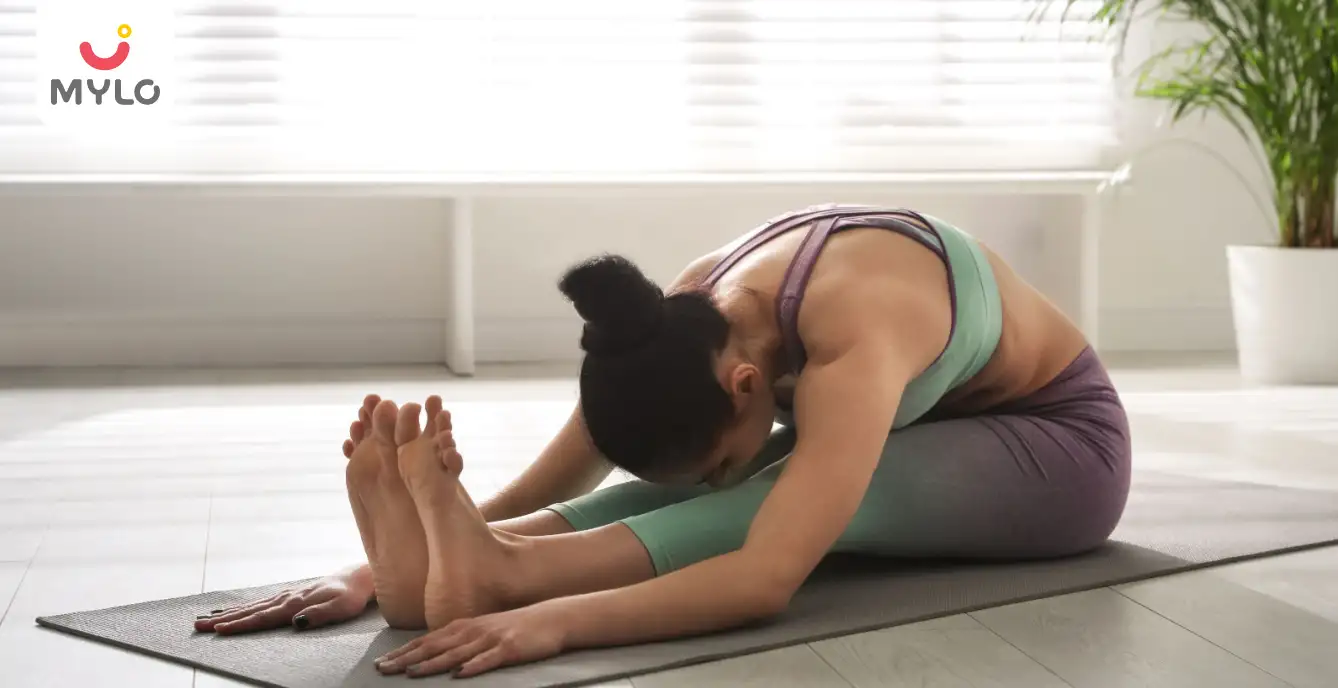
- Home

- PCOS & PCOD

- Yoga Poses for PCOD: 10 Asanas to Help You Balance Your Hormones
In this Article
PCOS & PCOD
Yoga Poses for PCOD: 10 Asanas to Help You Balance Your Hormones
Updated on 2 November 2023



Medically Reviewed by
Dr. Shruti Tanwar
C-section & gynae problems - MBBS| MS (OBS & Gynae)
View Profile

In today's fast-paced world, hormonal imbalances have become increasingly common, affecting women of all ages. One such hormonal disorder that plagues a significant number of women is polycystic ovaries, which bring along a host of challenges, including irregular menstrual cycles, weight gain, acne, and even difficulties in conceiving. While medication and lifestyle changes are often recommended, there's another powerful tool that can help- Yoga poses for PCOD.
When it comes to PCOD, specific yoga asanas (poses) can play a significant role in restoring hormonal balance and improving overall well-being. In this article, we will explore ten yoga poses that can assist women in managing PCOD symptoms and nurturing a healthier hormone balance.
How Effective is Yoga for PCOS and PCOD?
Yoga has been practiced for centuries as a holistic system for promoting physical, mental, and spiritual well-being. When it comes to managing PCOS and PCOD, Yoga offers a gentle and effective approach that addresses the root causes of hormonal imbalances. Regular practice of Yoga poses can help regulate the endocrine system, improve blood flow to the reproductive organs, and reduce stress levels.
Benefits of PCOD Yoga
Let us understand the benefits of Yoga for PCOD:
1. Regulates Hormones
Yoga poses for PCOD help regulate hormone levels by stimulating the endocrine system. Poses such as Supta Baddha Konasana (Reclining Bound Angle Pose) and Dhanurasana (Bow Pose) activate the ovaries and thyroid gland, promoting hormonal balance.
2. Improves Blood Circulation
PCOD Yoga poses increase blood flow to the reproductive organs, enhancing their function. Asanas like Bhujangasana (Cobra Pose) and Sarvangasana (Shoulder Stand) improve circulation to the pelvic region, promoting healthy ovarian function.
3. Reduces Stress
Chronic stress can worsen PCOS and PCOD symptoms. Yoga for PCOD problem includes relaxation techniques such as Shavasana (Corpse Pose) and deep breathing exercises, which calm the nervous system and reduce stress hormone levels.
4. Promotes Weight Management
Weight gain is a common symptom of PCOS and PCOD. Yoga poses such as Paschimottanasana (Seated Forward Bend) and Setu Bandhasana (Bridge Pose) help strengthen the abdominal muscles, improve digestion, and support healthy metabolic function.
5. Enhances Emotional Well-being
PCOD can have a significant impact on a woman's emotional health. Yoga for PCOD not only provides physical benefits but also promotes mental and emotional well-being. Asanas like Janu Sirsasana (Head-to-Knee Forward Bend) and Viparita Karani (Legs-Up-The-Wall Pose) help calm the mind, reduce anxiety, and improve overall mood.
You may also like : PCOS Treatment in Ayurveda: The Ultimate Guide to Natural Treatment Options
Important Considerations Before Starting Yoga for PCOD Problem
Before starting a Yoga practice to manage PCOS and PCOD, it is essential to keep the following considerations in mind:
1. Consult Your Healthcare Provider
It is always recommended to consult your healthcare provider before starting any new exercise regimen, especially if you have underlying medical conditions. They can provide personalized guidance based on your specific needs.
2. Start Slowly
If you are new to Yoga, it is important to start slowly and gradually build up your practice. Begin with beginner-friendly poses and listen to your body's needs, avoiding any strain or discomfort.
3. Practice Regularly
Consistency is key when it comes to reaping the benefits of Yoga for PCOD. Aim to practice at least three times a week, gradually increasing the duration and intensity of your sessions.
4. Modify Poses as Needed
Every body is unique, and it's important to honor your individual limitations. Modify poses as needed to accommodate any physical challenges or discomfort, and don't push yourself beyond your limits.
5. Combine Yoga with Other Lifestyle Changes
Yoga alone may not be sufficient to manage PCOD symptoms. It is important to adopt a holistic approach by combining Yoga with other lifestyle changes such as a healthy diet, regular exercise, and stress management techniques.
You may also like: PCOD Diet: How the Right Diet Can Transform Your Life
PCOD Yoga Poses
Now that you understand the benefits and considerations of practicing Yoga for PCOD, let's explore 10 powerful Yoga poses that can help you balance your hormones and find relief.
Yoga Pose #1: Supta Baddha Konasana (Reclining Bound Angle Pose)
- Lie flat on your back and bring the soles of your feet together, allowing your knees to fall open.
- Place one hand on your heart and the other on your lower abdomen.
- Close your eyes and take deep, slow breaths.
- Stay in this pose for 5-10 minutes, focusing on deep relaxation and releasing tension.
Yoga Pose #2: Bhujangasana (Cobra Pose)
- Lie flat on your stomach with your legs extended and tops of the feet resting on the mat.
- Place your hands on the mat beside your shoulders, keeping your elbows close to your body.
- Inhale and lift your chest off the mat, straightening your arms.
- Keep your shoulders relaxed and gaze forward.
- Hold this pose for 30 seconds to 1 minute, breathing deeply.
Yoga Pose #3: Dhanurasana (Bow Pose)
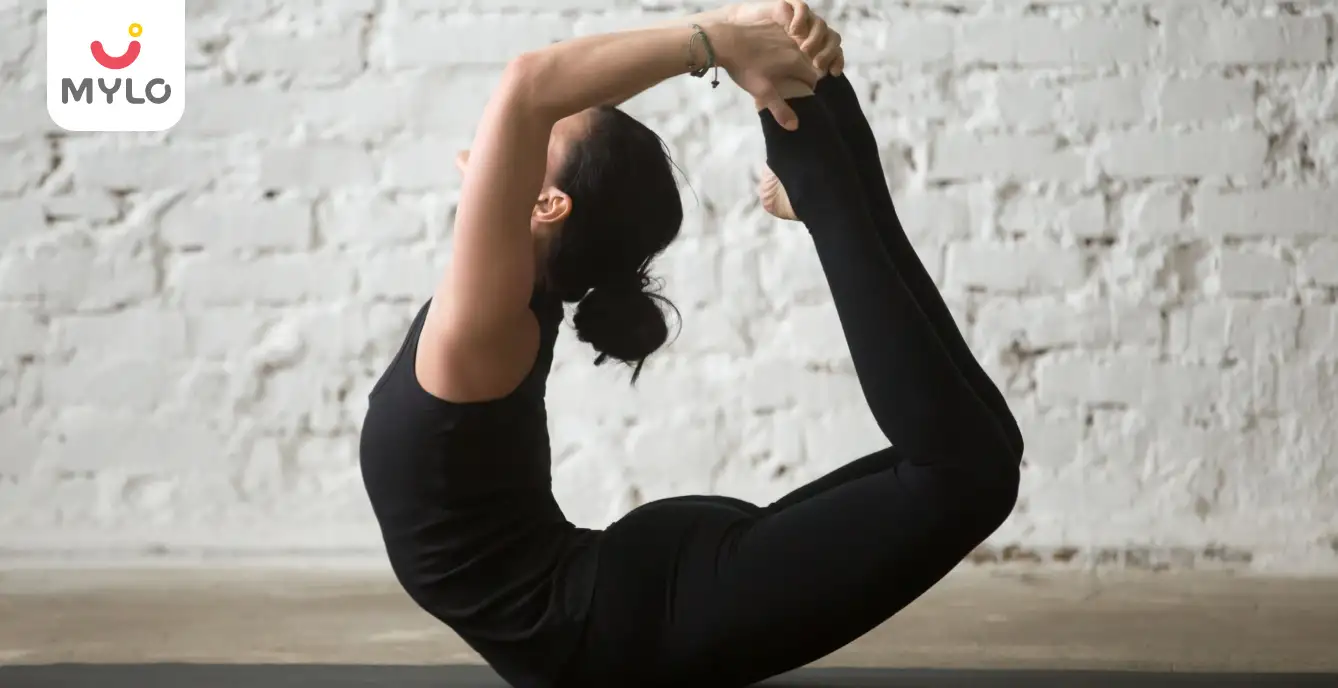
- Lie flat on your stomach with your legs extended and arms by your sides.
- Bend your knees and reach back to hold your ankles.
- Inhale and lift your chest off the mat, simultaneously kicking your feet into your hands to create a bow shape.
- Keep your gaze forward and breathe deeply.
- Hold this pose for 30 seconds to 1 minute, gradually increasing the duration over time.
Yoga Pose #4: Janu Sirsasana (Head-to-Knee Forward Bend)
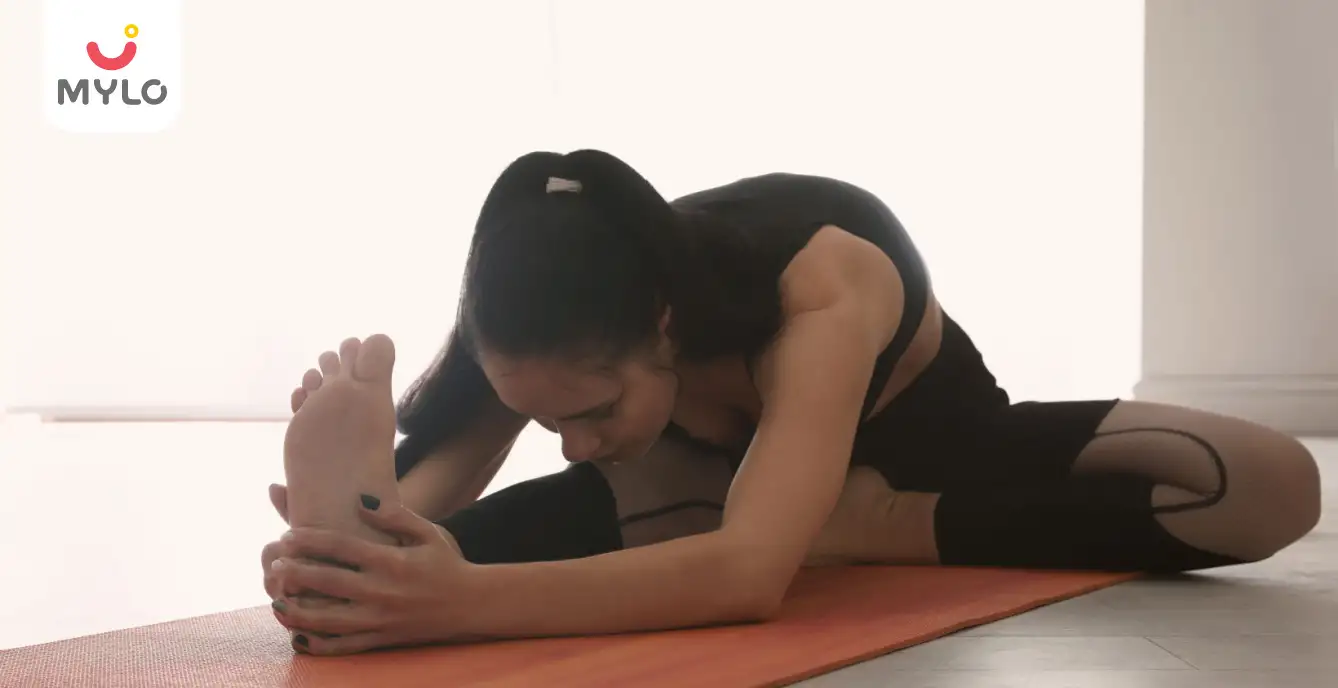
- Sit on the mat with your legs extended in front of you.
- Bend your right knee and bring the sole of your right foot to the inner left thigh.
- Inhale and lengthen your spine, then exhale and fold forward over your left leg, reaching for your left foot or ankle.
- Keep your spine straight and gaze forward.
- Hold this pose for 30 seconds to 1 minute, then repeat on the other side.
Yoga Pose #5: Paschimottanasana (Seated Forward Bend)
- Sit on the mat with your legs extended in front of you.
- Inhale and extend your arms overhead, lengthening your spine.
- Exhale and hinge forward from the hips, reaching for your feet or ankles.
- Keep your spine straight and gaze forward.
- Hold this pose for 30 seconds to 1 minute, breathing deeply.
Yoga Pose #6: Setu Bandhasana (Bridge Pose)

- Lie flat on your back with your knees bent and feet hip-width apart.
- Place your arms alongside your body, palms facing down.
- Inhale and lift your hips toward the ceiling, pressing your feet and arms into the mat.
- Keep your shoulders relaxed and gaze forward.
- Hold this pose for 30 seconds to 1 minute, breathing deeply.
Yoga Pose #7: Sarvangasana (Shoulder Stand)
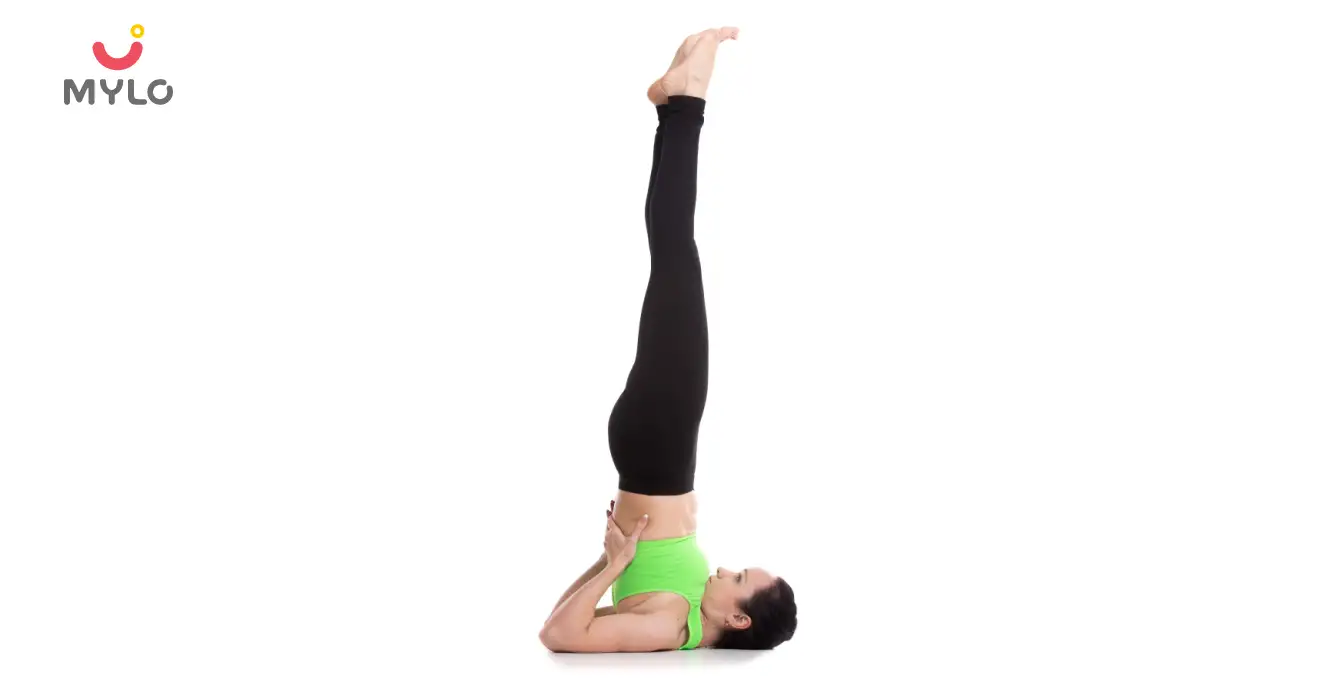
- Lie flat on your back with your arms alongside your body and palms facing down.
- Inhale and lift your legs toward the ceiling, using your hands to support your lower back.
- Keep your elbows close to your body and maintain a straight line from your shoulders to your feet.
- Hold this pose for 30 seconds to 1 minute, breathing deeply.
Yoga Pose #8: Viparita Karani (Legs-Up-The-Wall Pose)
- Sit sideways against a wall with your left hip touching the wall.
- Swing your legs up the wall and lie flat on your back.
- Place your arms by your sides, palms facing up.
- Close your eyes and take deep, slow breaths.
- Stay in this pose for 5-10 minutes, focusing on deep relaxation and releasing tension.
Yoga Pose #9: Ardha Matsyendrasana (Half Lord of the Fishes Pose)
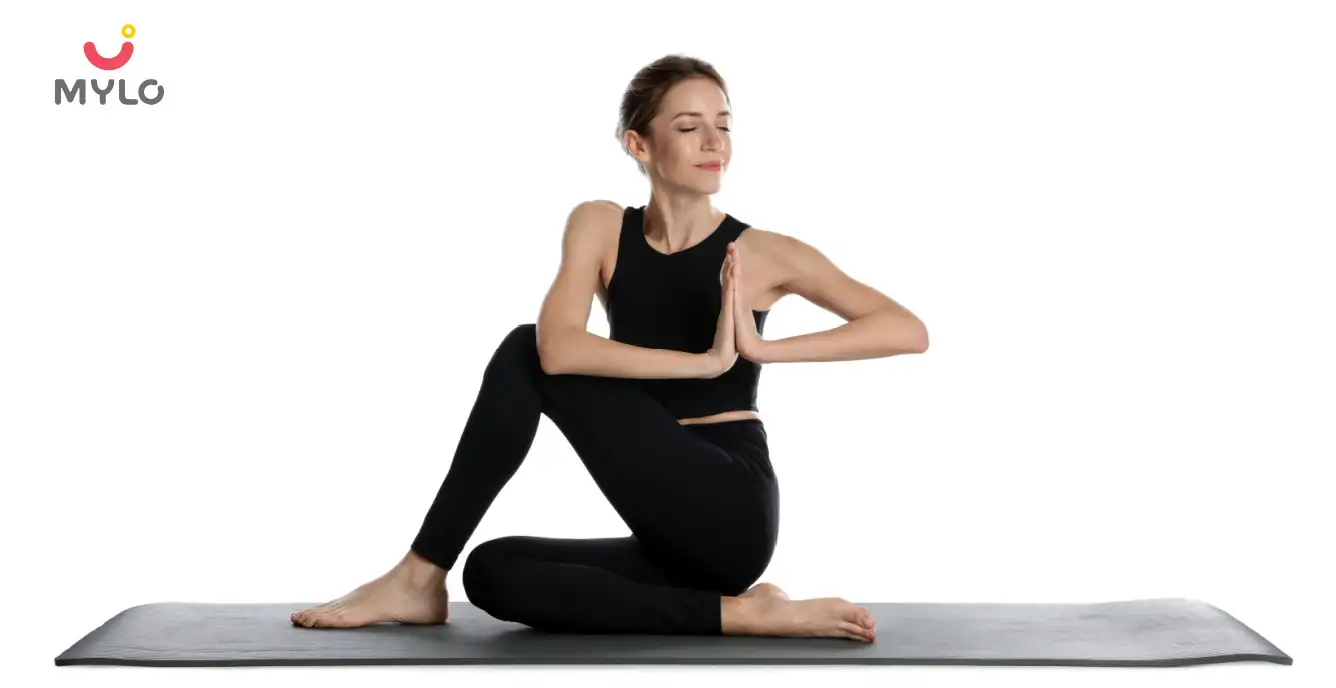
- Sit on the mat with your legs extended in front of you.
- Bend your right knee and cross your right foot over your left leg, placing it on the outside of your left thigh.
- Inhale and lengthen your spine, then exhale and twist to the right, placing your left hand on your right knee and your right hand behind you.
- Keep your spine straight and gaze over your right shoulder.
- Hold this pose for 30 seconds to 1 minute, then repeat on the other side.
Yoga Pose #10: Shavasana (Corpse Pose)
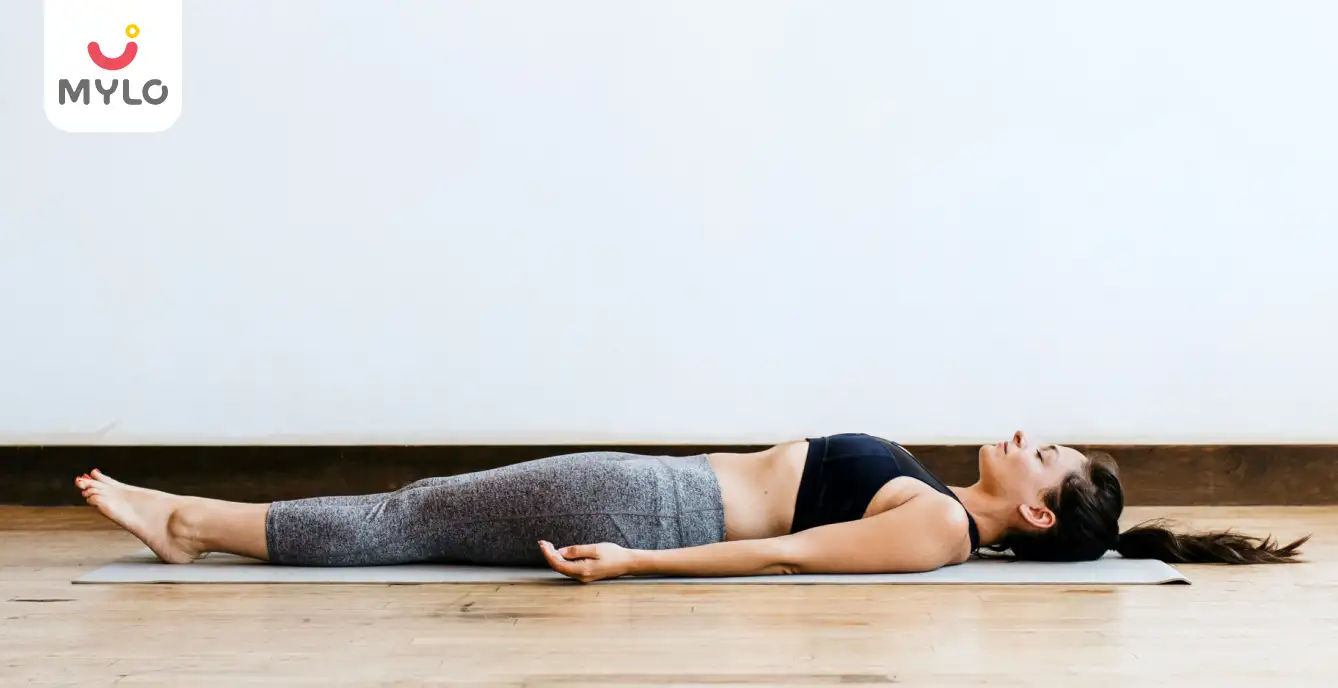
- Lie flat on your back with your legs extended and arms by your sides, palms facing up.
- Close your eyes and take deep, slow breaths.
- Allow your body to completely relax into the mat.
- Stay in this pose for 5-10 minutes, focusing on deep relaxation and releasing tension.
Other Lifestyle Changes to Complement Yoga Asanas for PCOD
While Yoga poses for PCOD can be highly beneficial, it is important to adopt a holistic approach by making other lifestyle changes as well. Here are five additional changes you can make to complement your Yoga practice:
1. Follow a Balanced Diet
A healthy diet plays a crucial role in managing PCOD symptoms. Focus on whole, unprocessed foods such as fruits, vegetables, lean proteins, and whole grains. Avoid sugary and processed foods, as they can exacerbate hormonal imbalances.
2. Engage in Regular Exercise
In addition to Yoga, incorporate other forms of exercise into your routine, such as brisk walking, swimming, or cycling. Regular physical activity helps maintain a healthy weight, improve insulin sensitivity, and reduce stress.
3. Manage Stress
High stress levels can worsen PCOD symptoms. Practice stress management techniques such as meditation, deep breathing exercises, and journaling. Find activities that help you relax and unwind, such as reading, listening to music, or spending time in nature.
4. Maintain a Healthy Weight
Achieving and maintaining a healthy weight can help regulate hormone levels and improve PCOD symptoms. Focus on a well-rounded exercise routine and a balanced diet to support weight management.
5. Get Adequate Sleep
Sleep is essential for hormonal balance and overall well-being. Aim for 7-9 hours of quality sleep each night. Establish a relaxing bedtime routine, limit screen time before bed, and create a comfortable sleep environment.
Final Thoughts
Yoga poses for PCOD offer a natural and holistic approach to managing hormonal imbalances associated with Polycystic Ovary Syndrome (PCOS) and Polycystic Ovarian Disease (PCOD). By incorporating these powerful Yoga asanas into your regular practice, along with lifestyle changes, you can find relief from PCOD symptoms and promote overall well-being.
References
1. Mohseni M, Eghbali M, Bahrami H, Dastaran F, Amini L. (2021). Yoga Effects on Anthropometric Indices and Polycystic Ovary Syndrome Symptoms in Women Undergoing Infertility Treatment: A Randomized Controlled Clinical Trial. Evid Based Complement Alternat Med.
2. Thakur D, Saurabh Singh DS, Tripathi DM, Lufang D. (2021). Effect of yoga on polycystic ovarian syndrome: A systematic review. J Bodyw Mov Ther.





Medically Reviewed by
Dr. Shruti Tanwar
C-section & gynae problems - MBBS| MS (OBS & Gynae)
View Profile


Written by
Anandita Sharma
Drawing on more than a decade of expertise in administration, Anandita Sharma currently serves as a content operations e
Read MoreGet baby's diet chart, and growth tips

Related Articles
Related Questions
Hello frnds..still no pain...doctor said head fix nhi hua hai..bt vagina me pain hai aur back pain bhi... anyone having same issues??

Kon kon c chije aisi hai jo pregnancy mei gas acidity jalan karti hain... Koi btayega plz bcz mujhe aksar khane ke baad hi samagh aata hai ki is chij se gas acidity jalan ho gyi hai. Please share your knowledge

I am 13 week pregnancy. Anyone having Storione-xt tablet. It better to have morning or night ???

Hlo to be moms....i hv a query...in my 9.5 wk i feel body joint pain like in ankle, knee, wrist, shoulder, toes....pain intensity is high...i cnt sleep....what should i do pls help....cn i cosult my doc.

Influenza and boostrix injection kisiko laga hai kya 8 month pregnancy me and q lagta hai ye plz reply me

Related Topics
RECENTLY PUBLISHED ARTICLES
our most recent articles
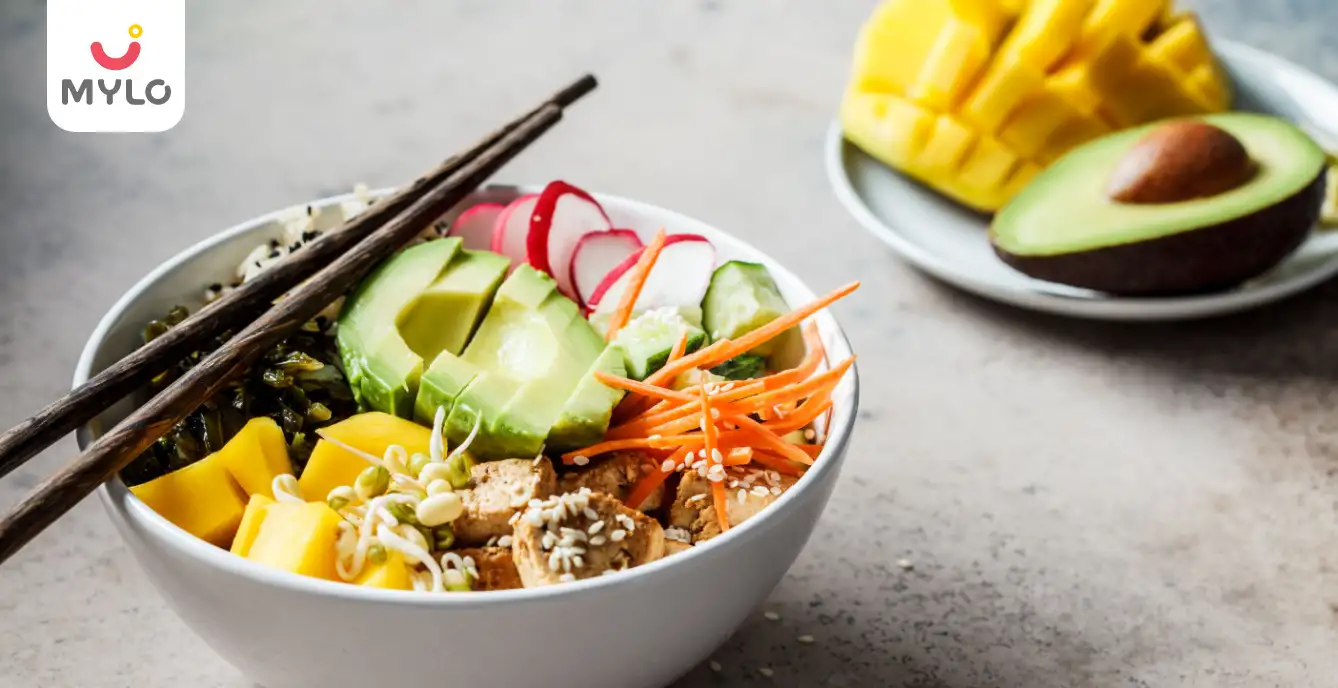
PCOS & PCOD
PCOD Diet: How the Right Diet Can Transform Your Life
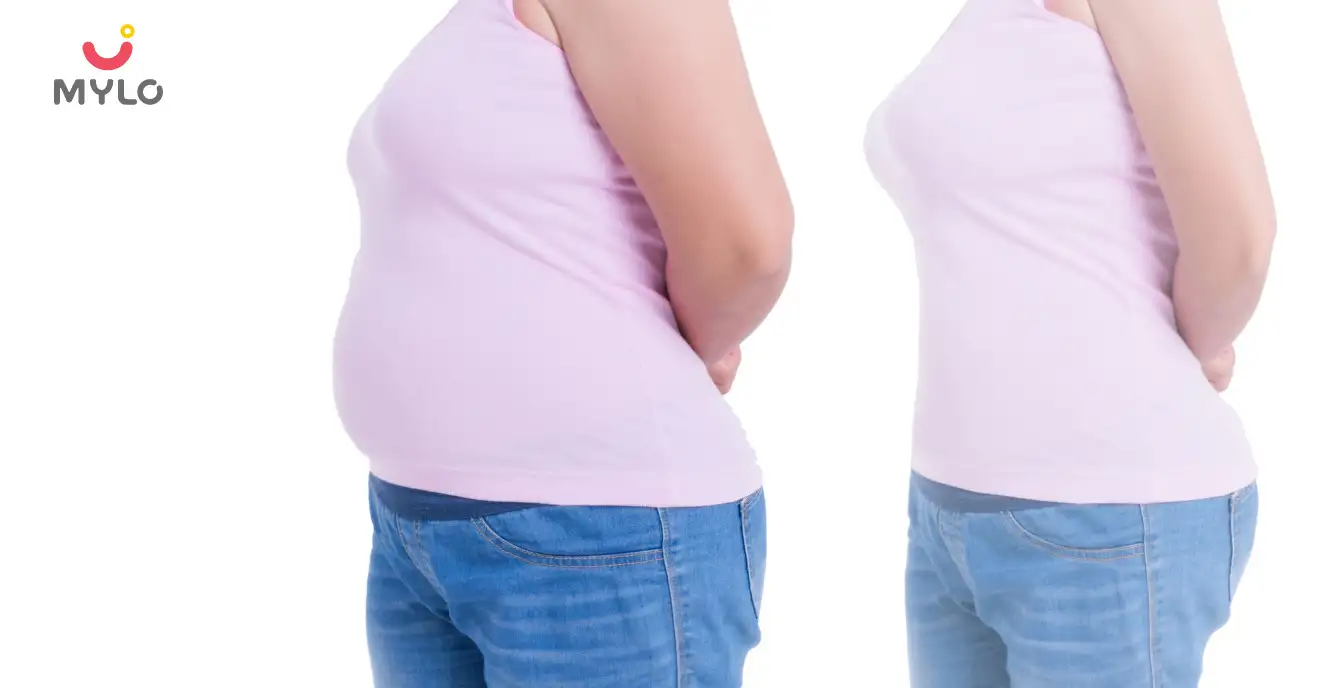
PCOS & PCOD
PCOS Weight Loss in 1 Month: How to Shed Pounds Fast

Breast Lump
Lump in Breast During Pregnancy: When to Get Serious and Visit a Doctor

Pregnancy Journey
Top 25 Pregnancy Quotes To Keep You Motivated & Happy During Pregnancy

TV & OTT
Top Crime Series on Hotstar: Your Ultimate Watchlist
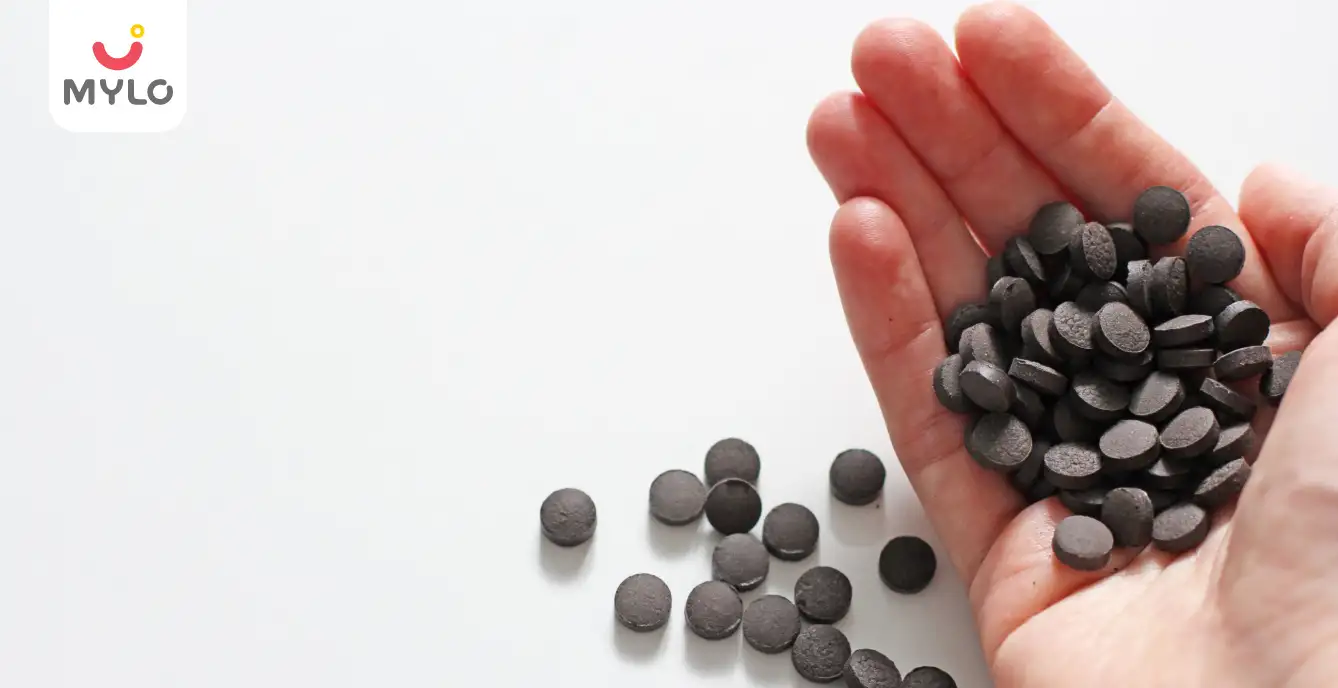
Ayurveda & Homeopathy
The Science of Medohar Guggulu: How it Aids Weight Management
- Ayurvedic Medicine for Weight Loss: Your Guide to Time-Tested Solutions
- Port Wine Stain Birthmark: Symptoms, Causes & Treatment
- Colostrum or First Milk : A Complete Guide About Its Meaning, Benefits & Side Effects
- Ayurvedic Medicine for White Discharge: A Guide to Discovering Natural Solutions
- The Ultimate Guide to Estrogen-Rich Foods and Their Benefits
- Ayurvedic Medicine for Erectile Dysfunction: A Guide to Discovering Natural Solutions
- Side Effects of Breastfeeding While Lying Down: Is It Worth the Risk?
- Big Areolas: A Comprehensive Guide to Causes, Risks and Treatments
- Anemia During Pregnancy: Symptoms, Causes & Management
- The Benefits and Risks of Using Hydrocortisone Cream for Babies
- The Ultimate Guide to Planning for Second Baby
- The Ultimate Parent's Guide to Dealing with Boils in Babies
- 2 Months Pregnant Belly: Understanding Your Belly and Baby's Transformation
- The Significance of Trilaminar Endometrium in Fertility: What You Need to Know

At Mylo, we help young parents raise happy and healthy families with our innovative new-age solutions:
- Mylo Care: Effective and science-backed personal care and wellness solutions for a joyful you.
- Mylo Baby: Science-backed, gentle and effective personal care & hygiene range for your little one.
- Mylo Community: Trusted and empathetic community of 10mn+ parents and experts.
Product Categories
baby carrier | baby soap | baby wipes | stretch marks cream | baby cream | baby shampoo | baby massage oil | baby hair oil | stretch marks oil | baby body wash | baby powder | baby lotion | diaper rash cream |

